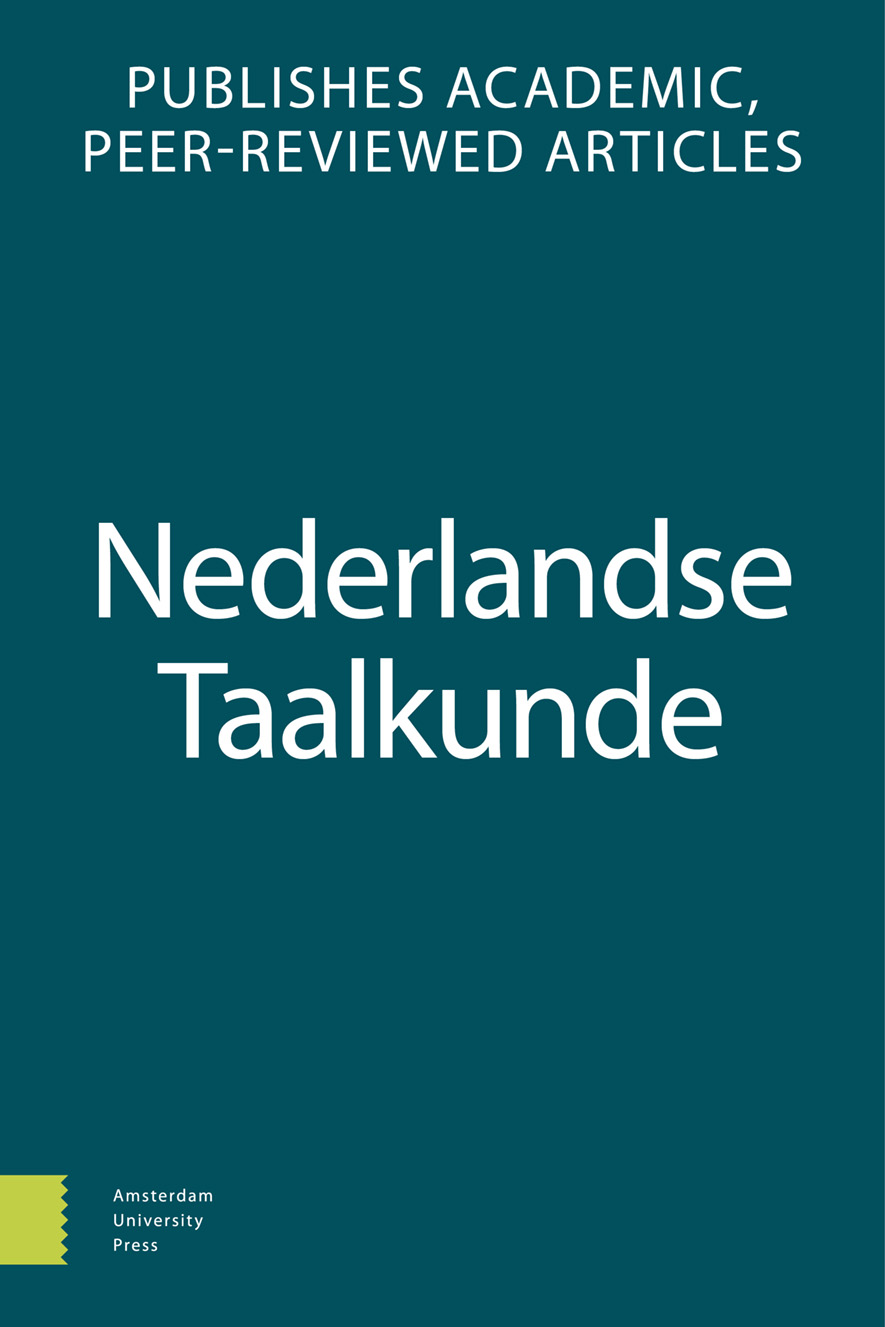- Home
- A-Z Publications
- Nederlandse Taalkunde
- Previous Issues
- Volume 14, Issue 1, 2009
Nederlandse Taalkunde - Volume 14, Issue 1, 2009
Volume 14, Issue 1, 2009
Language:
English
-
-
oa Tussentaal wordt omgangstaal in Vlaanderen
More LessCan the language of young people in Flanders tell us something about the future look and sound of Dutch in Flanders? To answer that question we start from the results of recent research on the informal language of people between 18 and 24 years old. The recordings used are part of the Corpus Gesproken Nederlands (CGN – Corpus of Spoken Dutch). When asked to hold an informal conversation in standard Dutch, most y Read More
-
-
-
oa Expeditie Tussentaal - Leeftijd, identiteit en context in “Expeditie Robinson”
More LessAuthors: Zenner Eline, Geeraerts Dirk & Speelman DirkIn this article, a quantitative corpus-based analysis is presented of the use of Colloquial Belgian Dutch (CBD, better known as tussentaal) in the reality-show “Expeditie Robinson” (the Dutch counterpart of “Survivor”). More specifically, we will use the format of the show and the stratified group of contestants to determine whether a correlation exists between CBD-variation on the one hand and several context- and speake Read More
-
-
-
oa Merk toch hoe sterk - Sjwa-insertie in spontaan gesproken Standaardnederlands
More LessAuthors: Kloots Hanne, Gillis Steven & Verhoeven JoThis paper focuses on schwa epenthesis in present-day spontaneously spoken Standard Dutch. Schwa epenthesis is studied in consonant clusters consisting of /r/ followed by a non-dental consonant. We compare the pronunciation of men and women, older and younger speakers, Flemings and Dutchmen originating from several regions in the Dutch language area. Since words with tautosyllabic consonant clusters (e.g. werk ‘wo Read More
-
-
-
oa Discussie over C.L. Ebeling, Semiotaxis. Over theoretische en Nederlandse syntaxis - De betekenis en interpretatie van Semiotaxis
More LessAuthors: Boogaart Ronny & Fortuin EgbertSemiotaxis van C.L. Ebeling (2006) werd in Nederlandse Taalkunde al besproken door A.M. Duinhoven (2007), die vooral inging op de theoretische uitgangspunten van Ebeling en het door hem gebruikte notatiesysteem. Vanwege de beperkte omvang van een boekbespreking kon Duinhoven slechts een paar van de vele onderwerpen die Ebeling aan de orde stelt, in meer detail behandelen. Gezien de veelzijdige inhoud van Se Read More
-
-
-
oa Uit de tijdschriften nummer 1, 2009
More LessDe rubriek Uit de tijdschriften geeft kort weer wat er in andere tijdschriften op het gebied van de taalkunde is verschenen. Momenteel worden in deze rubriek de volgende tijdschriften besproken: Anéla, Internationale Neerlandistiek, Naamkunde, Ons Erfdeel, Onze Taal, Over Taal, Taal en Tongval. Uitgevers van niet vermelde taalkundige periodieken die hun tijdschrift besproken willen zien, wordt verzocht contact op te nem Read More
-
Most Read This Month
Article
content/journals/13845845
Journal
10
5
false
en

Most Cited Most Cited RSS feed
-
-
oa Goed of fout
Authors: Hans Bennis & Frans Hinskens
-
- More Less

